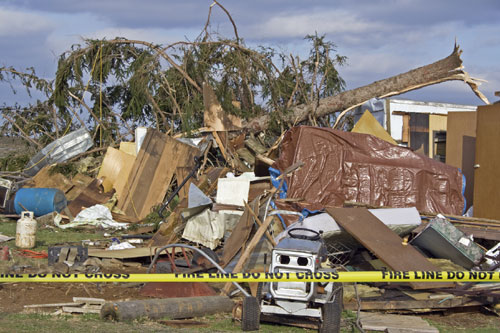Why the Inground Safety Shelter?
Every home should have a safe room for families to use in case of emergency. But if you home or business is located in an area known for sever storms and tornadoes, an interior room may not be enough to survive uninjured. This is especially true for manufactured homes and buildings, or any structure without access to a basement or a below ground level. Whether you live in a populated area or a remote location, there are many possible emergencies, disaster situations or local conditions in which you and your family would just feel safer in a protected place that is inaccessbile to tohers and nearly indestructible to the elements.
As you can see from the graphic below, a smaller group of Western-most states are only likely to see Tornadoes up to 130 mph, but the over whelming majority of states could see Tornado wind speed, typically 160 mph or faster. While a large, centralized population could see Tornado wind speeds in the 200-250 mph range!

Many people well tell you from personal experiences, tornadoes can cause true devestation. Tornadoes are well known for home destruction, as well as demolishing some of the strongest structures know to man. They throw trees and cars, down dangerous power lines and pick nearly anything up that crosses its path. As most safety experts will tell you, in a time of heavy storms and tornadoes, below ground in a safety shelter or a safe room is the safest place to be.


